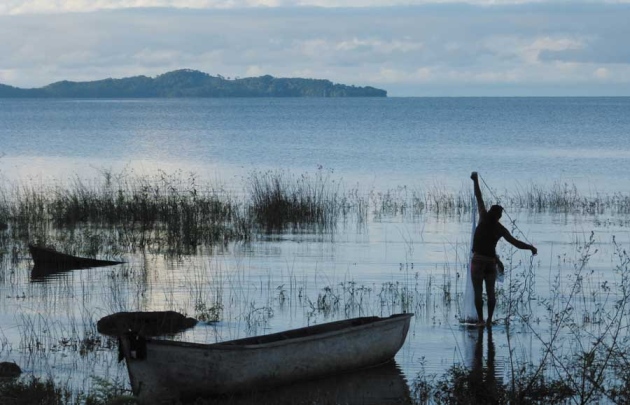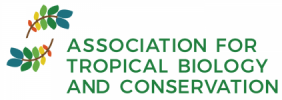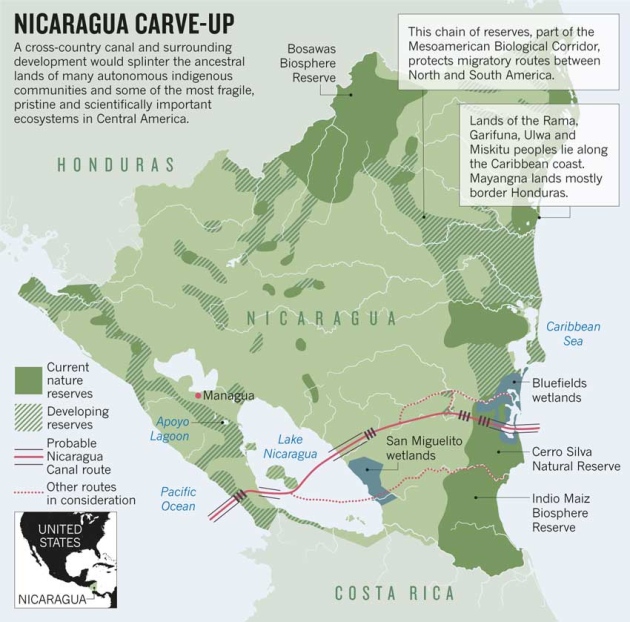 In June 2013, the Nicaraguan government granted a concession to the Hong Kong Nicaragua Development Corporation (HKND) to build an interoceanic canal connecting the Pacific Ocean and the Caribbean Sea, through Nicaragua, traversing Lake Cocibolca (also known as lake Nicaragua), along with multiple infrastructure development projects of considerable size. Planned developments include a 400 km2 artificial lake, multiple tourist complexes, factories to produce construction materials, and hundreds of kilometres of paved roads through otherwise inaccessible rainforest.
In June 2013, the Nicaraguan government granted a concession to the Hong Kong Nicaragua Development Corporation (HKND) to build an interoceanic canal connecting the Pacific Ocean and the Caribbean Sea, through Nicaragua, traversing Lake Cocibolca (also known as lake Nicaragua), along with multiple infrastructure development projects of considerable size. Planned developments include a 400 km2 artificial lake, multiple tourist complexes, factories to produce construction materials, and hundreds of kilometres of paved roads through otherwise inaccessible rainforest.
The Canal and its sub-projects, henceforth referred to as “the Canal”, will result in the excavation of 278 kilometres of land, lake and rivers, cutting through pristine rainforest and the largest drinking-water reservoir in Central America. The canal development is estimated to impact some 4,000 km2 of forest, coastline and wetlands that include the San Miguelito Wetland (a site protected by the Ramsar Convention, of which Nicaragua is a signatory), the Cerro Silva Natural Reserve, the Rio San Juan Biosphere Reserve, which comprises 7 protected areas, including the Guatuzos Wildlife Refuge, Indio Maiz Biological Reserve, and the Solentiname Archipelago. This reserve network is home to at least 22 known vulnerable and endangered species according to the IUCN Red List, including tapirs, jaguars, sea turtles, corals and other species; as well as some of the most unique and pristine remnants of mangroves, coral reefs, dry forest, rainforest, wetland and lacustrine habitat remaining in Central America. The Mesoamerican Biological Corridor as designed by regional governments will be cut in half and the canal and its infrastructure will create a significant dispersal barrier for plants and animals.
The Canal would create substantial impacts to water quality and supply. The Yale Centre for Environmental Law and Policy Environmental Performance Index (EPI) has identified Nicaragua as a country with “water stress”, meaning that the volume of water available to the population is inadequate and ranks Nicaragua 136 out of 163 countries surveyed for water scarcity. Yet the impacts of the Canal on access to clean freshwater in Nicaragua are likely to be severe. The combined impacts of the canal construction process coupled with accidental oil spills from ocean-going vessels using the passage could take decades to remediate and would hinder the use of lake water for drinking, fishing, irrigation and tourism. In Lake Cocibolca alone – one-third of the length of the canal – – the 520 meter wide and 30 meter deep channel will require the removal of approximately 1.1 billion tons of sediment and material from the lake bottom. As the region’s largest fresh water reservoir, with enormous and long-term strategic value, such changes will have severe and potentially irreversible impacts on the ecology of the lake, especially in the context of a changing climate and dwindling fresh water resources. Lake Cocibolca is also vital for regional food security and is instrumental to meeting future development and agricultural needs in the semiarid and highly populated Pacific slope of Central America.
The Canal will displace local populations, including rural farmers and indigenous communities, living within and near the Canal corridor, directly affecting the livelihood of thousands of people. Thedevelopment of theCanal violates the Nicaraguan Constitution and its fundamental principles, including Law 28 of 1987 and Law 445 of 2003, which recognize and guarantee the inalienability of indigenous’ and afro-descendants’ lands, which cannot be sold, donated nor leased.
In consideration ofthe inevitable environmental and social impacts of the Canal, the Association for Tropical Biology and Conservation (ATBC), the world’s largest scientific organization devoted to the study, protection, and sustainable use of tropical ecosystems urges the Nicaraguan government to:
- Consider the positive impacts of protecting its natural resources, rich biodiversity and cultural heritage on the long term viability and sustainability of Nicaragua’s economic development, including the protection of vital ecosystem benefits such as access to clean freshwater, healthy fish stocks and ecotourism;
- Enforce current Nicaraguan and international codes and treaties regulating land use on private and public properties designed to protect indigenous populations and native ecosystems;
- Invite the Organization of American States Inter American Commission on Human Rights and UNESCO to conduct a thorough, transparent and independent scientific review of the long term environmental and social consequences of the Canal project, as well as the legality and constitutionality of the Nicaraguan government’s concession with HKND;
- Cease all activity related to the construction of the Canal and its sub-projects until these independent studies are completed, and significant concerns are appropriately addressed.
(Link to PDF of resolution: English: ATBC-resolution23-Nicaragua; Spanish: ATBC-resolution23-Nicaragua-Spanish)




